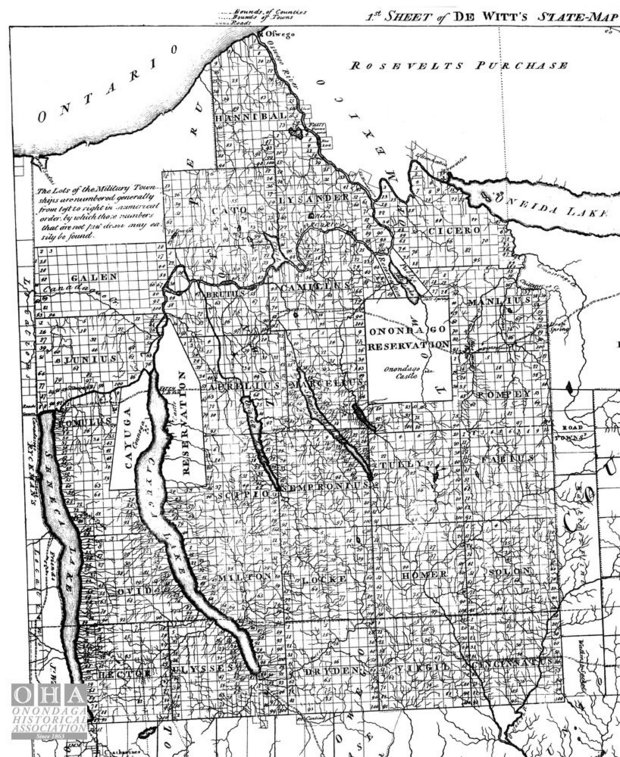
On July 3, 1790, Revolutionary War veterans drew for lots in the Military Tract. The Military Tract was a vast area of land in Central New York that was divided into 28 townships, each comprised of 100 lots, with 600 acres in each lot. The townships were predominately named after famous Greeks and Romans, such as Homer, Cicero, Marcellus and Pompey, many of which have kept the same names. Soldiers were awarded between 600 and 3,000 acres depending on their rank. The Military Tract was taken from the territory of the original inhabitants of New York state, the Haudenosaunee, or Iroquois as they are more commonly known; specifically, the Onondaga and Cayuga nations. According to the Onondaga Nation, between 1788 and 1822, the Onondaga Nation lost possession of approximately 95% of its land as more Americans/Europeans moved into Upstate New York.
This area of one million, 747 acres in the middle of New York State was set aside by state legislators as a bounty for men from New York who had served in the American Revolution. Privates and noncommissioned officers got 500 acres; high ranks more, the largest number, 2,000 acres, to lieutenant colonels and majors. Soldiers could claim their lands by pulling lot numbers from a ballot box. Records indicate that of 2,090 New Yorkers entitled to land, though many many sold their land or let it lie vacant.
The man credited with naming the 26 town within the tract was Robert Harpur, a Columbia College classics scholar who was New York’s assistant secretary of state. Harpur was a member of the board charged with naming the towns.
(The following information on Pompey is from ongov.net) – “Pompey was one of the original towns established in the Military Tract when it was laid out in 1790. It was labeled Township No. 10 as it had no name at the time. This land was set aside as payment for those soldiers from New York State who fought in the Revolutionary War. According to Reverend William Beauchamp, one hundred forty-one Revolutionary War soldiers were buried in Pompey cemeteries. The earliest settlers, mostly from Connecticut and Massachusetts, founded Pompey Academy, the first academy in Onondaga County. William VanBrocklin wrote, “Prior to 1870 Pompey can boast of being the birthplace of more sons who have become eminent in the diversified vocations of life than any town in the United States.” In 1825 the Town of LaFayette was formed from the western part of Pompey; however, the early settlements of Delphi Falls, Oran, Pompey Center, Pompey Hill and Watervale still remain within the town.”

